Texels

Staffordshire


Texels

Staffordshire

The Texel Sheep Society has revolutionised Texel breeding with the introduction of routine genomic evaluations, the most informative evaluation of its type in the sheep industry due to the depth and wealth of data available in the breed’s evaluation.
This forward-thinking approach has significantly enhanced the accuracy of performance indexes for Texels, offering commercial buyers a new level of confidence when selecting Texel rams for their flocks.
Choose Texel breeding stock with confidence –AddTexelAddValue
The future of Texel breeding is brighter than ever. With the power of genomics enhancing the Texel breed, you can make breeding decisions with greater accuracy, confidence, and financial gain. Maximise your flock’s potential and experience the future of sheep farming today by using Texels!
Genomics takes Texel breeding to the next level
Launching the new genomic services in early 2024, the Texel Sheep Society compared data from Texels born in 2022 (shearling rams) and 2023 (ram
Texel
Photography
Country Girl Media, Jonathan Long, David Porter, Ruth Rees, MacGregor Photography.
lambs), from the first genomic evaluation against previous non-genomic data. The results are clear: genomics is making a big difference.
Key Findings:
9 Financial Benefits: The average index value increased by 25% (about £1) for genotyped animals compared with a 14% (40-50p) increase for non-genotyped animals
9 Higher Genetic Value: In the last non-genomic evaluation, genotyped animals showed a 12% higher accuracy than non-genotyped animals, with results showing an advantage in breeding value.
9 Increased Accuracy: After the first genomic evaluation, the Terminal Index accuracy for genotyped ram lambs increased by 20% and by almost 19% for shearling rams. For non-genotyped animals, the accuracy remained unchanged.
Average Index increased by +25%

Thanks to the introduction of profit-focused Indexes by the Society, selecting the right Texel ram has never been easier for commercial producers. Indexes focus on both terminal and replacement traits, making it simpler to choose animals based on the value they’ll bring to your production system.
Published as a measure of the potential profit per lamb born in a commercial setting compared to the population baseline. The higher the index, the better the animal’s performance – and with genomics providing the boost, you can make smarter decisions that drive better results.
Example:
• For prime lamb production, use the terminal index to maximise meat yield.
• For breeding replacements, use the replacement index to optimise your flock’s future.
More than just meat yield –Texels offer comprehensive genetic value
The sub-indexes behind the economic indexes provide additional insights into the relative values of growth, carcass quality, reproduction, and adult size, enabling you to make a well-rounded selection for your specific breeding goals.
A significant boost for the sheep industry
Genetic advancements in the Texel breed are projected to be worth more than £334 million to the UK sheep industry over the next 20 years. Incorporating new economic indexes is expected to bring additional benefit of £16.9 million. These improvements are driven by increased rates of genetic progress due to selection based on economic indexes.
A top 5% Texel ram in a commercial flock can add more than £690 to his progeny over a three-year working life. This is based on a ram serving 50 ewes a year for three years, with a sale ratio of 1.5 lambs per ewe served. A top 5% ram adds an extra £3.07 to each lamb, compared to a ram with an average Texel economic index. For the latest Texel sale dates
Combining pedigree and performance data for maximum benefit to sheep genetic selection
By merging pedigree, performance data and genomics every pedigree Texel is equipped with the most advanced and accurate genetic insights. This powerful combination means more than 2m pedigrees are included in the monthly evaluation, helping commercial producers make more informed breeding decisions, resulting in superior flock performance and greater profitability.
iTexel.uk: the go-to database for sheep performance genetics
At the heart of this genetic revolution is iTexel.uk, an industry leading database for sheep performance genetics. With access to comprehensive data and cutting-edge genomic evaluations, iTexel.uk enables you to easily search, analyse and select Texel breeding stock with unparalleled precision.
By using iTexel.uk, commercial producers can confidently enhance their breeding programs, ensuring they make the best choices for growth, carcass quality, reproduction and overall profitability. Empower your breeding decisions with the latest in genetic performance data and watch your sheep farming business thrive.
Welcome to the 2025 edition of Primestock, the Texel Society’s commercial publication showcasing the breed’s success across UK farms.
In a world of constant change, there’s one thing that remains unwavering: Texels continue to add value wherever they go.
With their superior growth rates, impressive carcass balance, and exceptional meat yield, Texel sires are proven to boost your returns—whether you’re selling prime, store, or breeding stock. From Cornwall to Orkney, Texels thrive in every farming system, proving time and again why they’re the number one choice for commercial producers across the UK.
As reported later in this publication, Texel cross lambs consistently grow at more than 0.5kg/day and, with their quick finishing times, they’re the ones that put the most profit in your pocket.
Thanks to ongoing genetic improvements, Texels are more efficient than ever, offering unrivalled growth, meat yields, and finishing ability.
With more producers benefiting from Texels than ever before, the question is—can you afford not to? Adding Texels to your flock means more value, more profit, and a brighter future for your sheep enterprise.
John Yates Chief Executive
#AddTexelAddValue

Can you afford not to choose Texel?
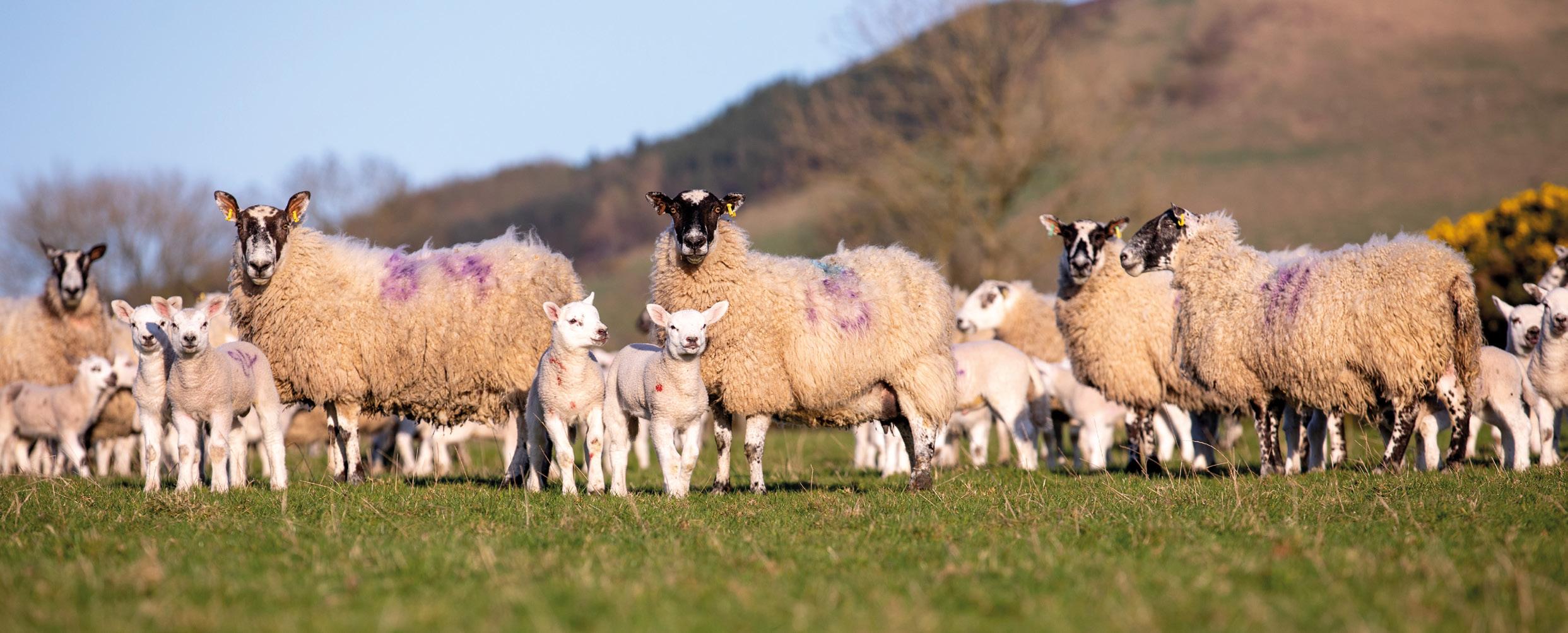
A burgeoning trade for crossbred ewe lambs allied to premium prices for his prime lambs means there is only one choice of sire breed for Dungiven, Co Londonderry-based Alwyn McFarlane.
Farming 1100 Mule ewes alongside 250 Blackface ewes and 80 suckler cows as well as small flocks of both Border Leicesters and Texels, Alwyn says he’s tried other breeds, but has come back to the Texel for the added value they offer.
“We’ve been using Texels for many years and dabbled with other breeds along the way, particularly as some of our ewe lamb customers were wanting black headed lambs rather than white headed ones.
“However, we were finding the wether lambs harder to finish and the ewe lambs weren’t actually making as much as the Texel crosses were. Even in the prime lambs the price difference was noticeable.
The difference in price between the Texel crosses and the others was at least £12/head and up to £16/head,” he explains.
And, says Alwyn, when you average that out across potentially 2000 lambs a year, it is a sizeable amount of income to miss out on.
Birth vigour and hardiness are also critical factors in his sire selection and with all ewes and lambs moving at least three miles, if not further, from home within a week or 10 days of lambing, the ability to withstand bad weather is vital.
“As is the nature of a lot of farms here in Northern Ireland, our ground is fairly spread out. We have a good block of 75 acres here at home, but then everything else is between three miles and seven miles away.
“We split the flock for lambing, with 450 ewes lambing from the 12th of March and the remaining 650 lambing in the first week of April. Those early lambing ewes then spend a week or so at home and then must be moved to away ground to make room for the later lambing ewes to be turned out post-lambing,” says Alwyn who this year is hosting NSA Northern Ireland Sheep.
“Splitting the flock also maximises the work each ram gets each year, with rams run with ewes for about 15 days before being taken off and then used on the main block three weeks later.”
Vigour and hardiness are crucial elements in making Texels the number one choice for Alwyn McFarlane and family.
On top of this, it is the quick growth of the Texel when crossed onto a milky ewe like the Mule that ticks the boxes for the McFarlane family, including Alywn’s father, Mervyn and wife, Joanne.
“Our Texel cross lambs just put weight on all the way through the spring and summer off their mother’s milk and grass,” he explains.
“We take our first draw of prime lambs in the second week of July weighing from 44-50kg liveweight, with our first ewe lamb sale being on the first week of August and we usually have 250 lambs forward for that.
“Those early ewe lambs do have a small amount of feed in the final three weeks before sale, but that’s just to put a bit of bloom on them. They’ve already grown the frame and stature by that stage.”
Such is the demand for the family’s Texel x Mule ewe lambs that 90% of them are sold for breeding, bringing valuable extra income to the flock. “Last year our best ewe lambs sold at £176 and the first 250 would all average not far behind that.”
Most of the flock’s prime lambs are sold deadweight to Dunbia, with 30% grading as Us and the majority grading as Rs.
“We’d rarely see an O grade, but will always get the odd one. Hitting the U grade earns us an extra 10p/kg, which is a good boost, but so long as most are in the R spec then we’re achieving a decent return.”
Occasionally, Alwyn chooses to sell a few pens of prime lambs liveweight and last year saw his pen lead the Texel prime lamb show at Ballymena Mart, selling at £168 for 50kg lambs.
“I like supporting the live market, but it can be most of the day lost, whereas dropping lambs to the collection centre means travelling two miles down the road, giving me more time to get on with the rest of the workload,” he explains.
Scanning in excess of 200%, with this year’s scanning revealing a yield of 214%, the flock generally sells at between 190% and 195% every year, in part due to rigorous health routines implemented to maximise performance.
“I’m fairly rigid in health management, aiming to treat the whole flock in the same timeframe no matter what we’re doing. So, in the first week of May we Heptavac all the lambs and give them a nematodirus drench, with ewes drenched at the same time if the faecal egg count suggests they need it.
“Then we go back in five weeks later with the second Heptavac dose and worm the lambs again and treat them with Clik Extra too. Ewes are then shorn in mid-June and lambs receive a mineral drench and another worm drench if required. Keeping the lambs thriving is vital to maximising their value,” he adds.
The first draw of ewe lambs are weaned three weeks ahead of sale, with about 300320 drawn off at this point. Weaned ewes are then turned away to hill ground to dry off and build their body condition back up.
“All the ewes have their mouths and udders checked at weaning as well as being scanned for OPA disease. We’re keen to keep that out of the flock having seen a few cases in the past, so scan the entire flock every year,” says Alwyn.
“Three weeks ahead of tupping ewes have their udders checked again, receive a mineral drench and are dipped before being put on to good grass for flushing.”
Replacement ewes are currently being sourced within Northern Ireland, as movement restrictions as a result of Bluetongue have prevented Alwyn sourcing them from his usual supplier in Scotland.
“We were bringing 300 Mule ewe lambs over every year for our replacements, all off the same farm and had being doing so for many years. They were the type of sheep we were looking for and we knew the history of them.
“Now we’re having to buy out of local markets here. It’s OK, but inevitably we end up buying from a number of flocks and that means we have to be extra rigorous with quarantining them and ensuring we get them onto our health system.”
Texels are adding value to both the McFarlanes’ prime lambs and ewe lamb sales.
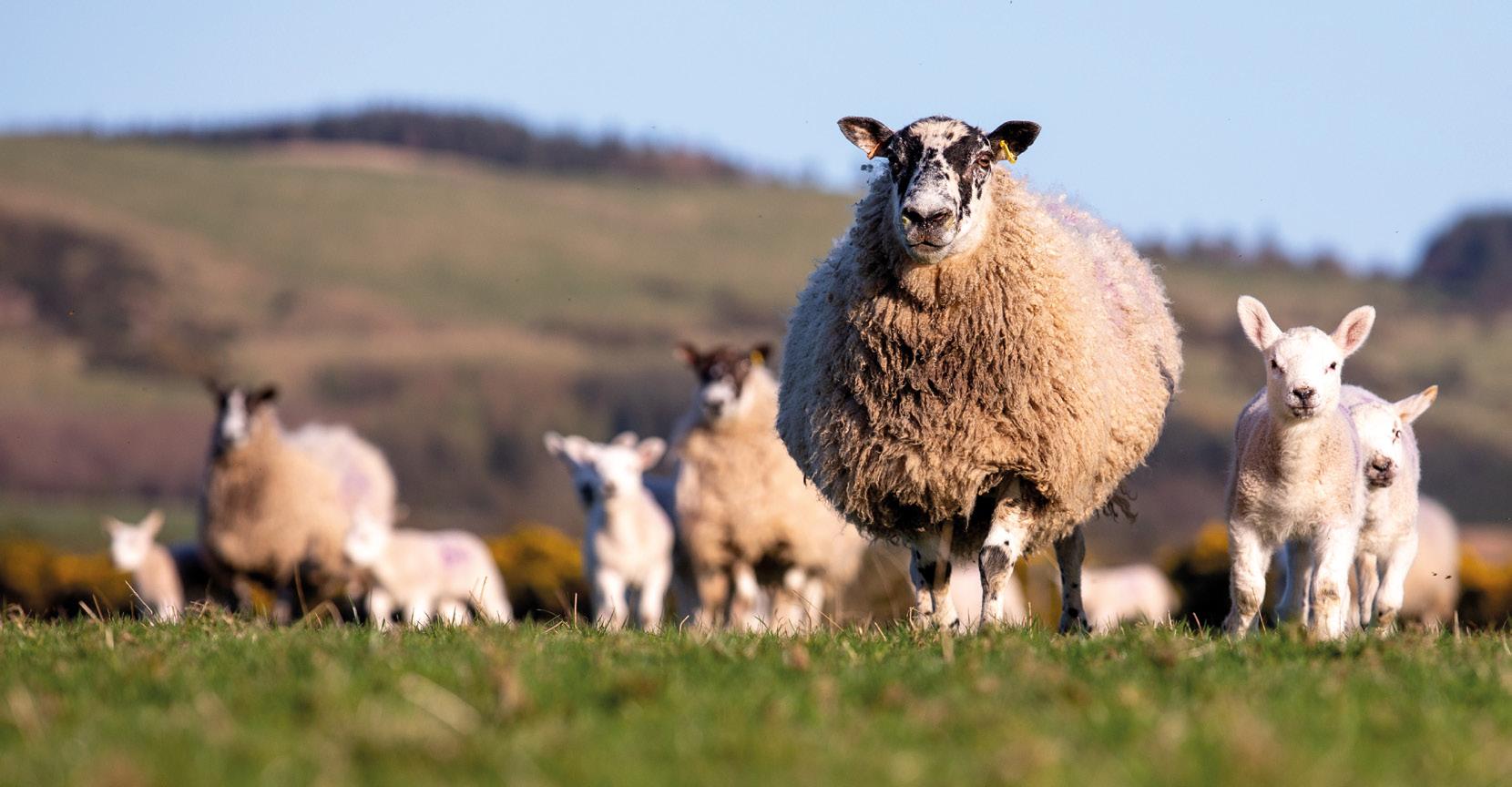
Alwyn, Joanne and Mervyn McFarlane.
Dungiven, Co
Londonderry
• 1100 Mule ewes
• Sell 90% of ewe lambs for breeding
• Scan at 200+%
• First prime lambs sold at 12 weeks old
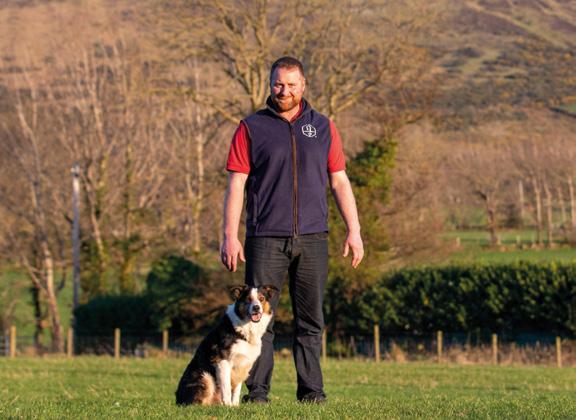
When it comes to tup buying Alwyn stays close to home, buying Texel shearlings at local sales, including Coleraine and Ballymena.
“I’m looking for a shearling with a good carcass, a solid top and essentially, good feet and legs. I like them to be cocky, but I don’t want a cocky tup if it means sacrificing the fundamentals of easy fleshing and functional traits.
“I’m happy to pay well for the tups I want and had to go up to £1500 last year for the right ones, but I’ve always worked on one tup being 10 prime lambs, so we’re still in the right place,” he says.
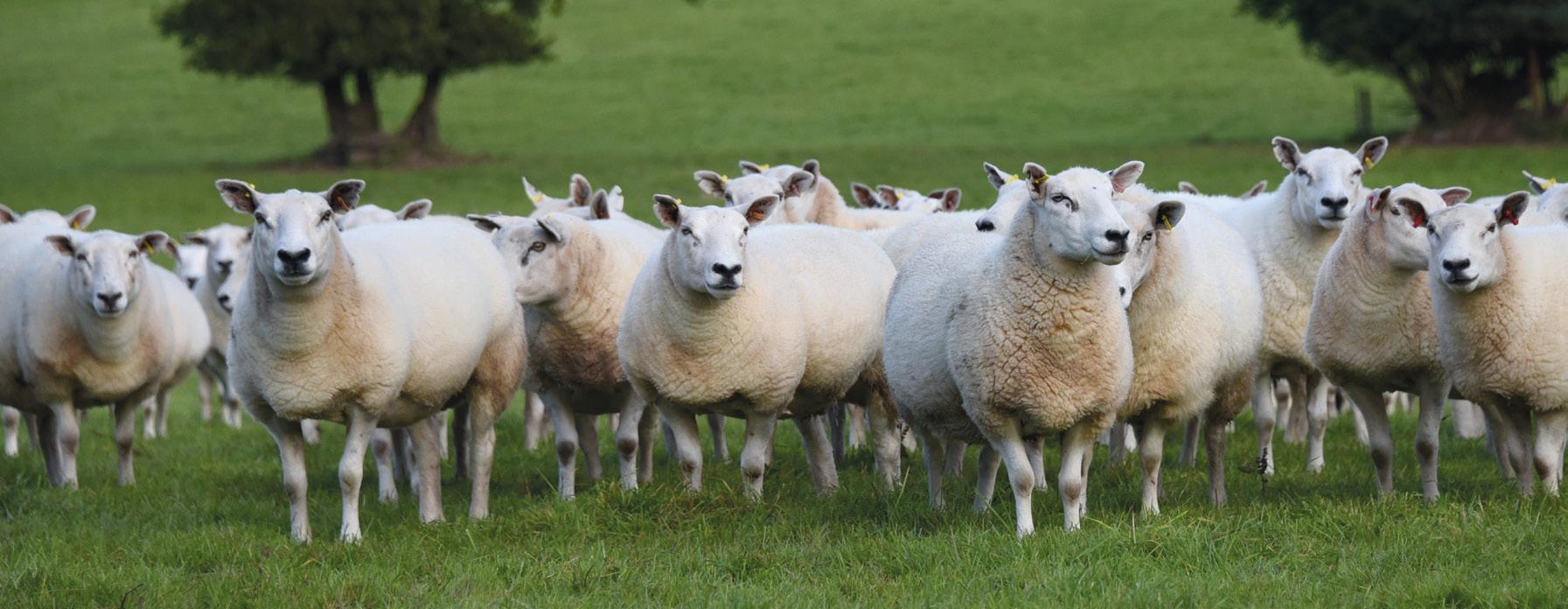
Good grassland management allied to careful breed selection are the foundations to successful sheep farming for Talybont-on-Usk sheep and beef farmers Glasnant and Linda Morgan and family.
Farming in partnership with the couple’s son, Huw, and his wife, Claire, the family runs a 1000 head flock, including about 200 replacement ewe lambs, alongside 35 suckler cows across 400 acres of in-bye land and 600 acres of mountain access.
Based on a hill flock of Cheviots and Welsh ewes, the lowland flock is made up of largely Texel cross ewes, which are tupped to Texel tups again to produce lambs which regularly attract high prices through local live markets, explains Glasnant.
“The hill flock numbers about 300 ewes, with half of these bred pure to produce replacement ewes for the hill flock and the other half tupped by Texel and Suffolk rams. The maternal attributes of the Texel cross ewes have made them a firm favourite and putting them back to a Texel ram adds value to their progeny.
“We lamb about 450 ewes early, starting at the end of January, with the remainder lambing from mid-March onwards. Those early lambing ewes are housed before Christmas, with feeding starting about six weeks out from lambing for twin and triplet bearing ewes, while singles just have access to a feed block, helping manage lamb size,” he explains.
Once lambed the family aim to have ewes and lambs out to grass within 24-48 hours, depending on the weather, putting them out in smaller groups initially, to make daily shepherding easier.
“The system relies on good spring grass for ewes and lambs and that means we have to manage the grass effectively. We close-up fields early in the autumn, putting ewes into larger groups and feeding silage to make up the difference,” says Glasnant.
“That really makes the difference and means we don’t have to offer any creep feed to lambs in order to have the first prime lambs
sold at
10-12 weeks old.
“Last year our first lambs were sold at Talybont market on 7th May at 39kg and making £179/head. The following week we sold another 97 at 35kg and £141/apiece.”
He also points to the high cull value of Texel cross ewes as another added value feature the breed offers the flock, with culls regularly making up to £180/head. “That adds hugely to the sustainability of the flock in an economic sense.”
And that sustainability is at the heart of farm management, with red clover grown to provide a superior silage crop for the housed ewes, while all stock are bedded on bracken harvested from the hill ground.
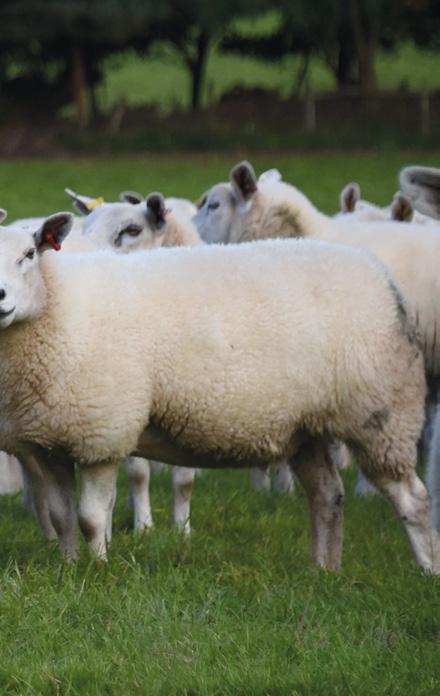
Glasnant, Linda, Huw and Claire Morgan
Pwllyrhwyaid Farm, Talybont-on-Usk
• 1000 ewe flock
• 450 early lambing ewes
• Grassland management focus
• First lambs sold at 10-12 weeks old
Texel cross ewes put back to Texel rams are delivering added value for the Morgan family.

“Grassland management is our focus and we have won the UK Grassland Farmer of The Year title before. The aim is to maximise output from grass, so we rotationally graze ewes through the summer, moving them around the farm in mobs of about 200 ewes and lambs.
“How often the mobs move depends on field size, but generally they won’t be on a field for more than three days. Working like this means we can, most years, sell our first draw of lambs without needing to drench them,” he adds.
A small amount of nitrogen fertiliser is used early in the season to give grass a kick start, with some herbal leys in the rotation and a lot of Timothy grown due to its ability to grow at lower temperatures.
The flexibility of using Texel rams also means the family can opt to sell ewe lambs for breeding or draw store lambs if the trade suits.
“We look for rams that can produce lambs with adaptability, growth is key for us, but we want some shape too, provided they’re not too extreme and have a good skin too. Rams are usually bought at the Early NSA Ram Sale, often from the same flocks each year.”
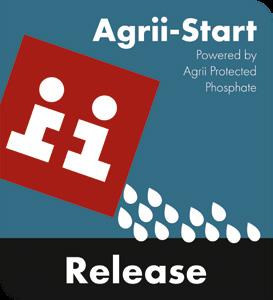
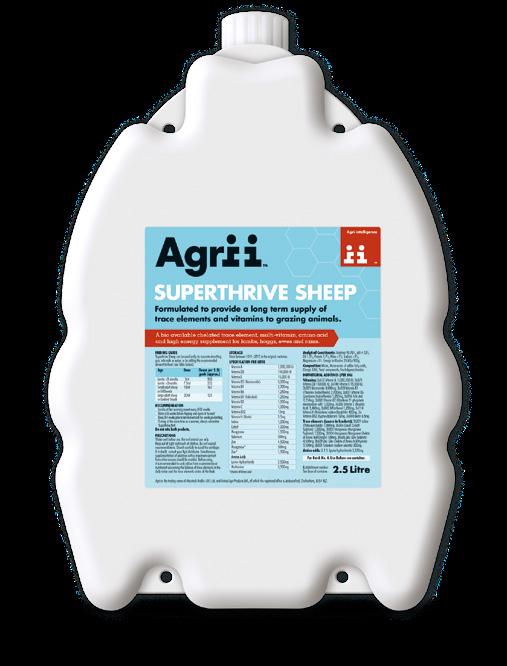
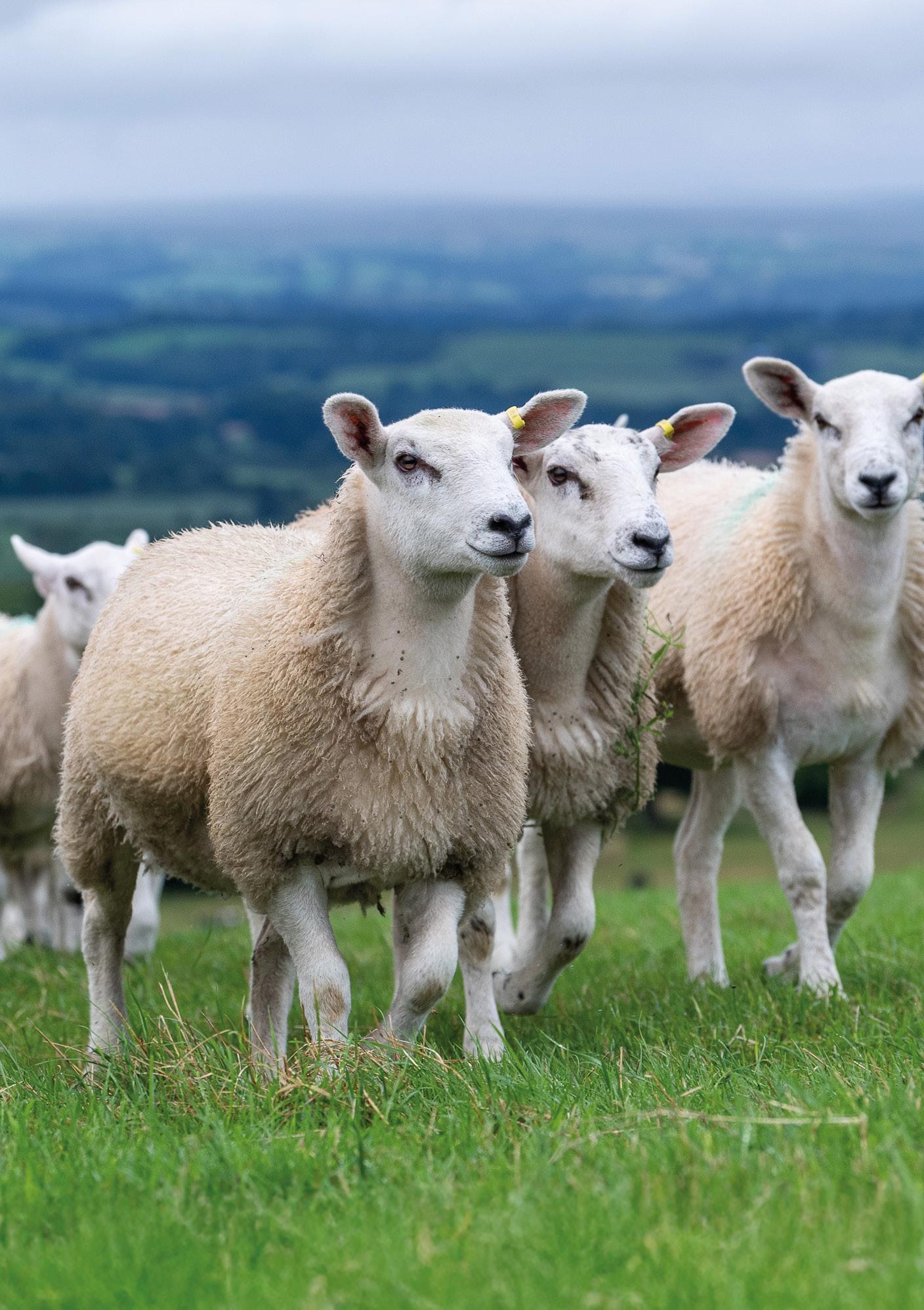

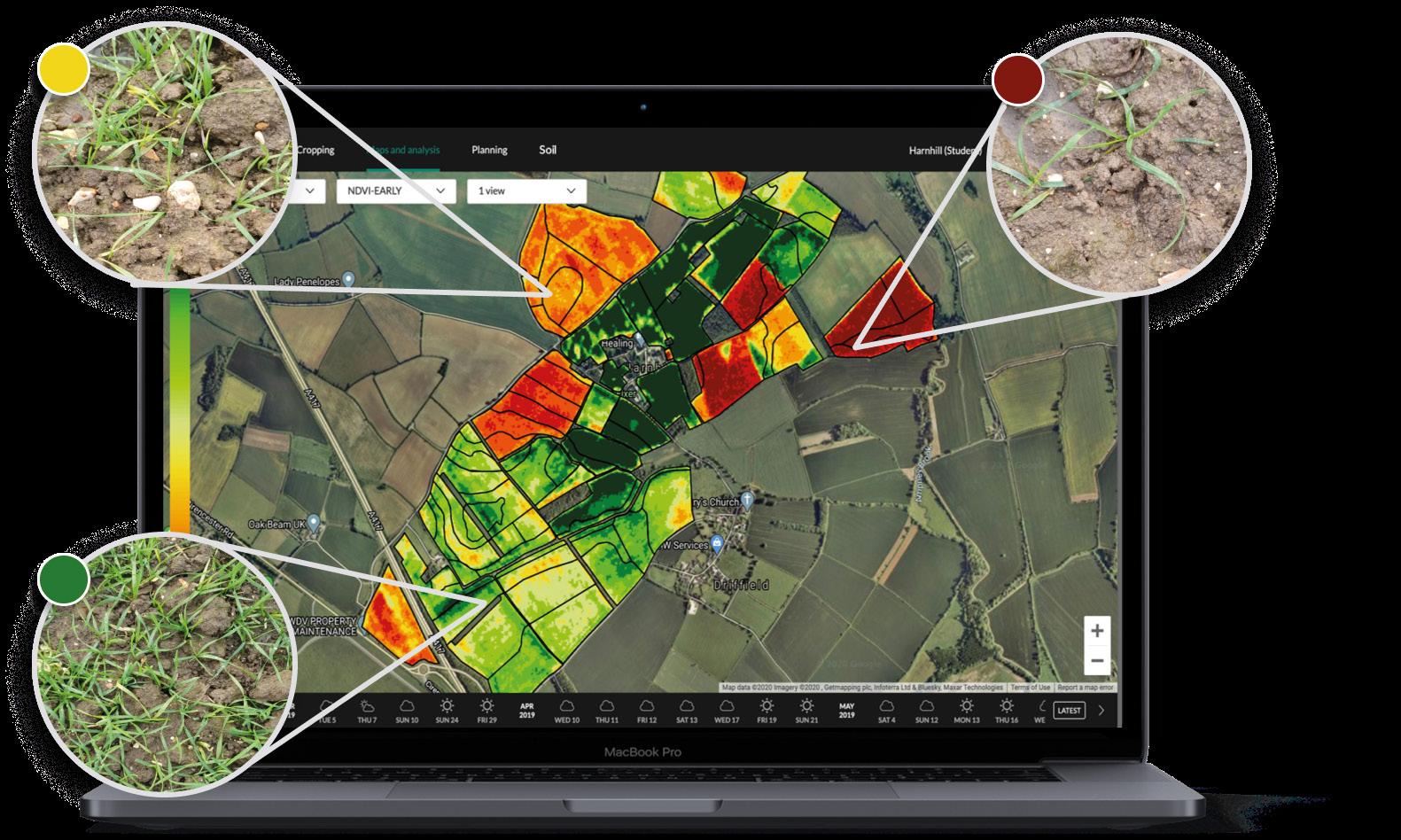
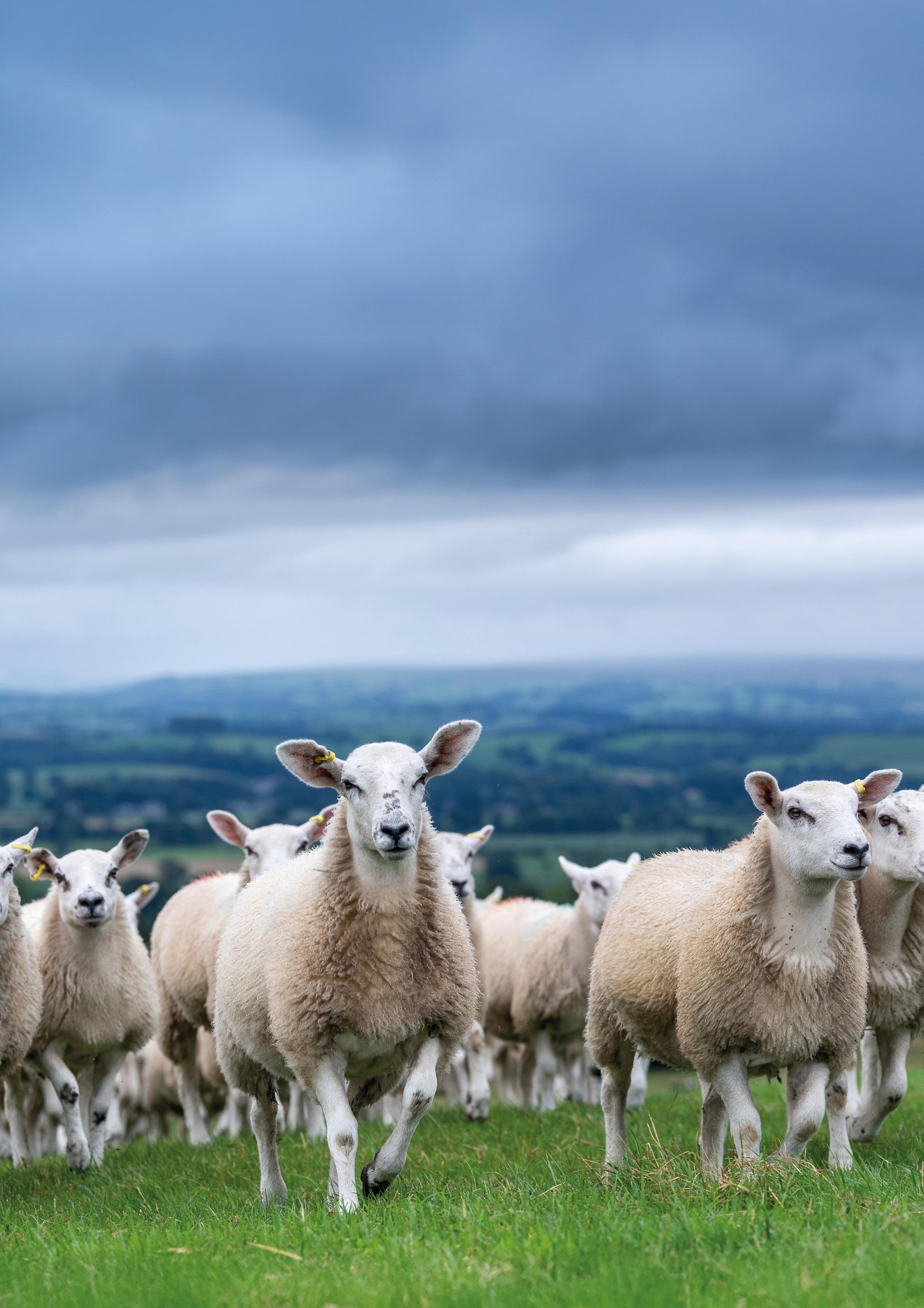
For Allan McArthur, the Texel’s ability to sire hardy, early finishing lambs, suits his simple sheep system perfectly at Cretlevane, Balfron.
In all, the 570-acre farm is home to 1000 breeding ewes and a small herd of Charolais cattle. Sheep numbers have increased in recent years, following the dispersal of the commercial cattle herd.
Now, 290 Blackface ewes go to homebred Bluefaced Leicester rams, with 500 Scotch Mule ewes and 150 Mule ewe hoggs put to Texels.
There’s also a flock of 35 pure Bluefaced Leicesters. While there may be the capacity for more sheep through the summer, Allan says the high rainfall and wet ground, limits how many sheep the farm can take through the winter.
The Bluefaced Leicesters lamb inside in March, while everything else lambs outside, from 8th April onwards. Allan’s daughters Karyn and Louise are both keen on the livestock, with Louise and her fiancé Donald, living close enough to home to help when they’re needed throughout the year, particularly at lambing.
Allan explains: “The tups all go out at the same time, so the Mule lambing happens all in the one go, all outside, with only the odd problem ones brought in. Normally, that works well weather-wise, but 2024 was the worst lambing weather I can remember. That said, although it wasn’t enjoyable in any way, we didn’t end up with too many losses in the end.”
The aim with the Texel lambs is to get them away as quick as possible, so they are creep fed from the start and Allan begins selling them through the market from the first week in July.
Allan first tried a Texel ram about 15 years ago and was so impressed with the lambs, that he gradually began buying all Texel rams. “My father was always a Suffolk man and I always thought the Texels wouldn’t put the weight on like the Suffolks, but they have no problem there and once I started using Texels there was no going back.
Allan McArthur, Balfron Station, Glasgow
• 570-acre sheep and beef farm
• 1000 ewes
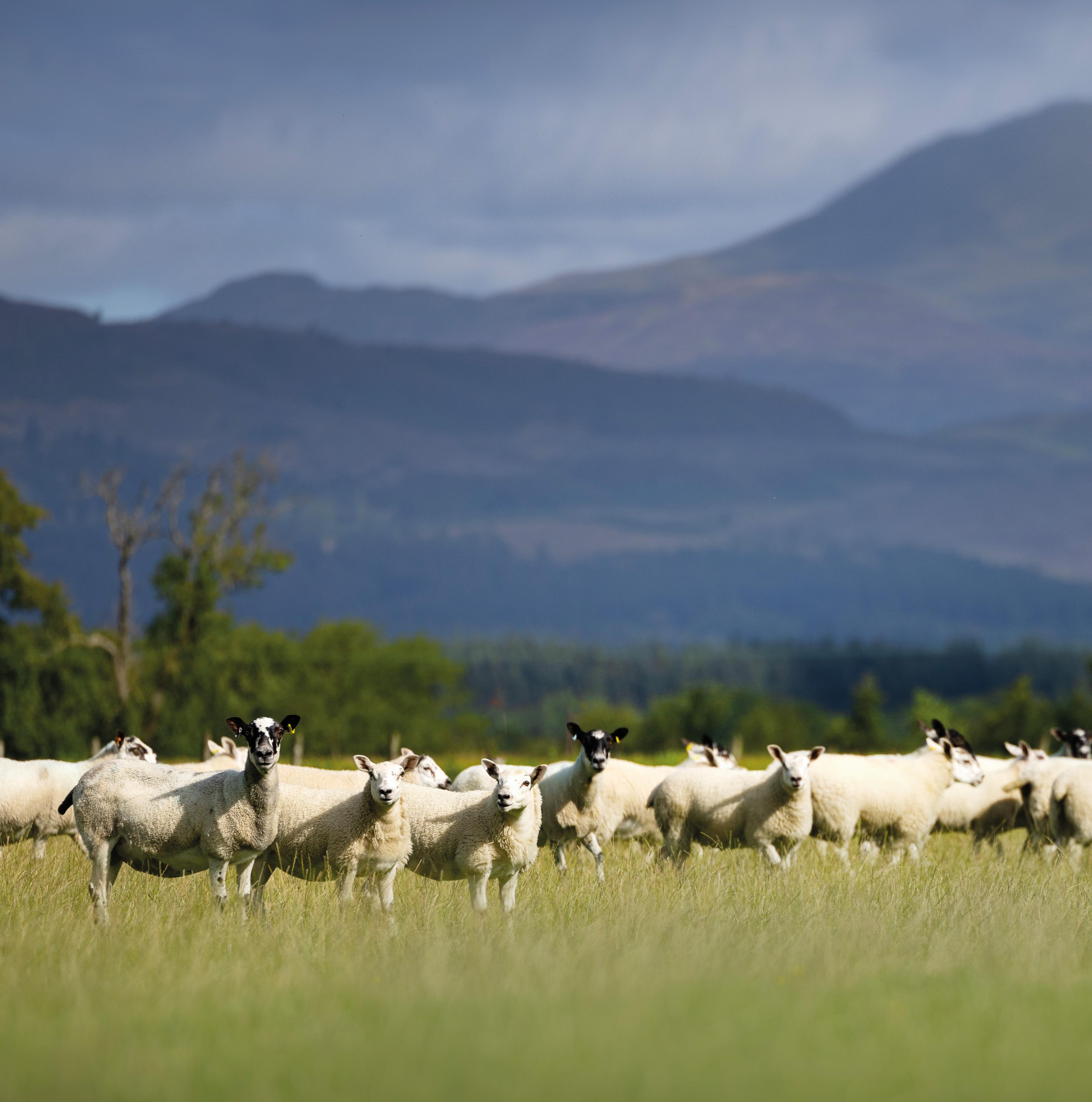
• 195% scanning
• April lambing outside
• Shearlings preferred

“This is particularly true now there is more demand for heavier lambs, as the Texel lambs can quickly put on the kilos. I aim to sell them at 48-50kg.
“Another big advantage of the Texel lambs is that they’re a lot cleaner and they don’t get the dirty tails that the Suffolk crosses do,” he says.
“Supporting live markets has always been important to me, so we sell all our lambs through the ring. I think it was clear how much we need them when there were no live markets back in 2001 during foot-andmouth and they were hugely missed. It had a detrimental effect on the trade. We need markets to ensure a fair price. It’s important from a social aspect too. It’s always good to catch up with folk at the market,” adds Allan.
By the end of September 2024, Allan had sold 571 Texel cross lambs through the ring, mainly at United Auctions, Stirling, with some to Caledonian Marts, to average £148.50. By the end of November, another 395 had sold to average £147.19. That’s alongside 76 Mule wether lambs, 70 Mule ewe lambs (through UA) and 20 Mule ewe lambs sold privately. He also sells on any Mule hoggs that are left with twins. And, Bluefaced Leicester shearling rams are sold at Stirling, after being used as lambs.
“We keep 120 Mule ewe lambs to join
the flock each year. The Scotch Mules suit our ground and the fact we can breed our own replacements works well – plus, the Texel onto the Mule is a great combination.
The Mule ewes are big, with a good lambing percentage and that, combined with the Texel carcass, produces a big, strong lamb, that can easily get to 4850kg,” adds Allan.
When it comes to buying Texel rams, Allan is quite specific what he’s looking for: big, long and bare. They are mainly bought through United Auctions at Stirling, often from Gary More, Townhead and Ross Farms, Wester Middleton. Recently, there have been purchases from the Knap and Milnbank flocks too.
“I usually buy in shearlings, as I’ve found that ram lambs sometimes don’t grow on as well if they are pushed hard as lambs, while shearlings have already done their growing. However, I did buy two lambs from Milnbank in 2023 that are both still here and one from Overburns last year.”
Creep feeding from the beginning may seem an expensive way to finish the lambs, but Allan says there are several advantages to getting the lambs away as quick as possible. “It probably costs about £15 a lamb to feed them right through and it is time consuming, however, it works for us on our current system and frees up the ground.
“When we had more cattle and were cutting 110 acres of silage, we used to sell the lambs straight off their mothers, as we had the silage aftermath to put them on. Now we’re only cutting 30-40 acres of silage, so it suits better to get the lambs away by November. If it ended up a wet winter and we still had a lot of lambs left, it wouldn’t be ideal,” he says.
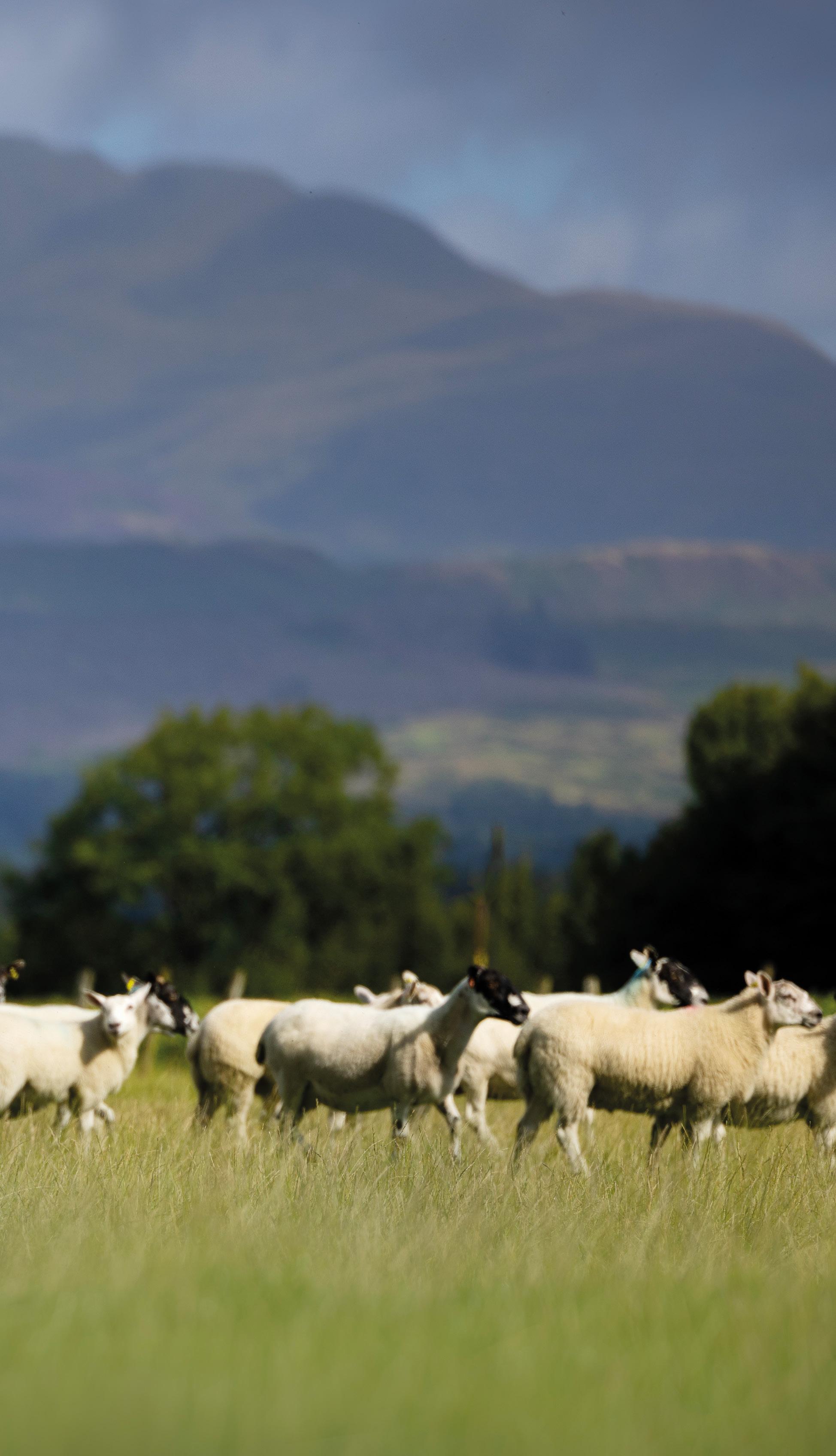
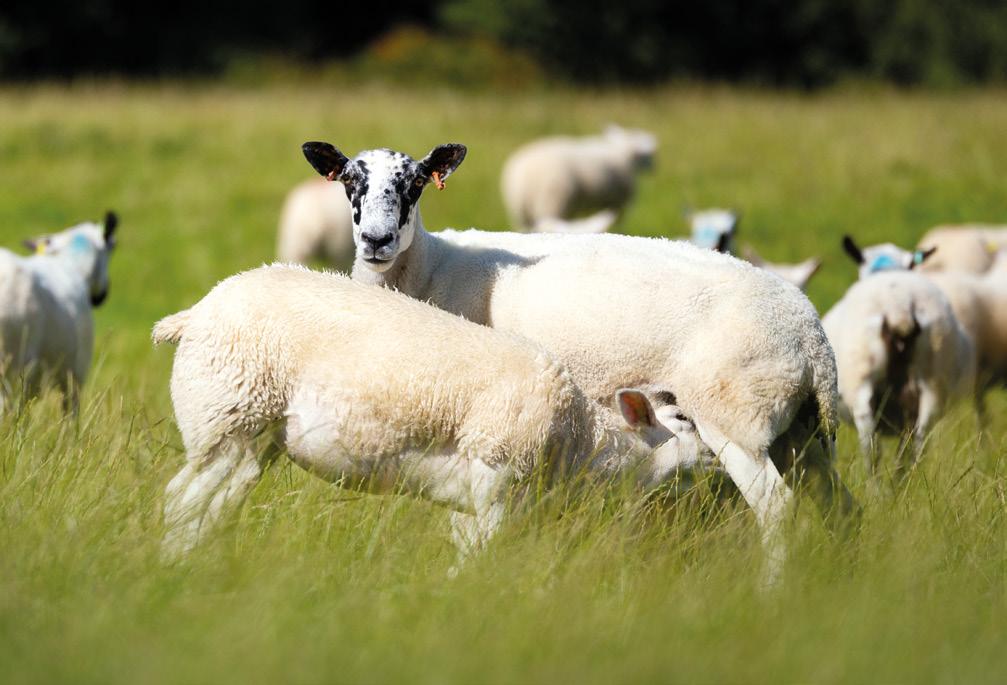
The flock’s Texel cross lambs all sold at more than £145/head last year, with all sold liveweight.
The lambs being finished quicker leaves more grass for the ewes and Allan says this has resulted in an increase in lambing percentage, to 195%, which is plenty for their system.
“There are many benefits of finishing the lambs quickly at home, but I know people that sell all their Texel lambs early as stores, and that works for them. We’ve found the Texel to be a versatile breed that can adapt to suit various systems, always producing a fast-growing lamb with a quality carcass,” adds Allan.
Quick growth from Texel crosses means there’s more grass for tupping ewes on, helping boost lambing percentage.
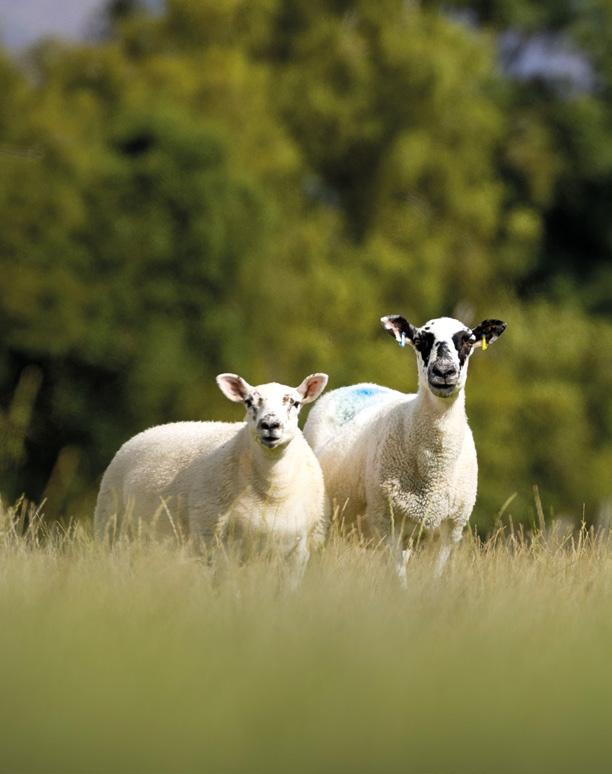
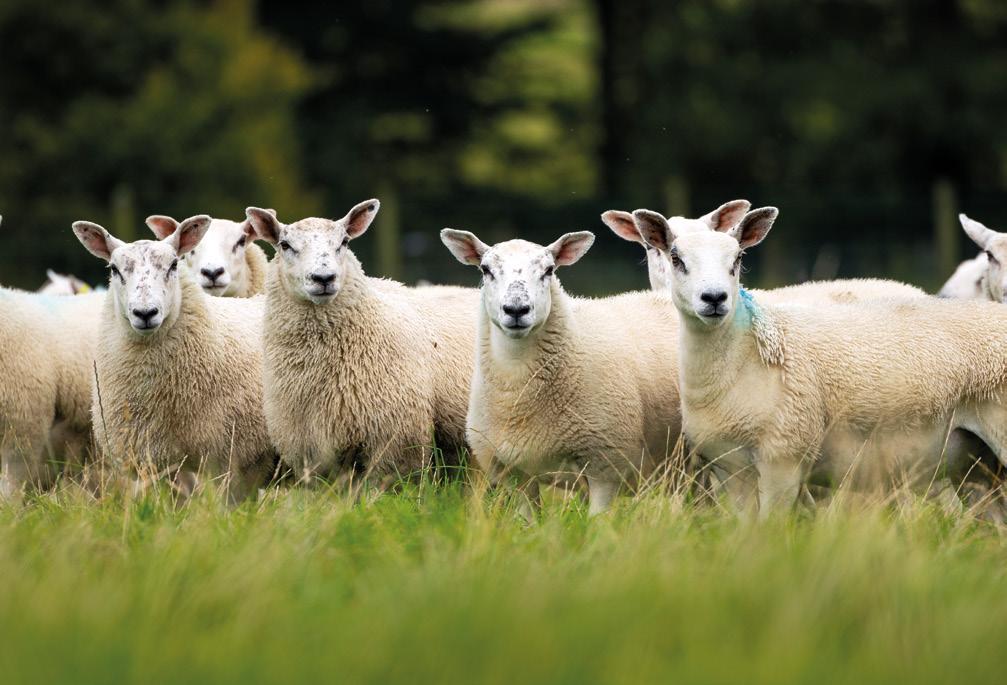
The ability to finish lambs quickly and earn premium prices has seen the Cox family, Marston, Staffordshire, switch to entirely Texel tups over the last couple of years, having previously used a mix of Continental sires.
“We run
560 Welsh Mule ewes
alongside a milking herd of 500 pedigree Holsteins and 400 beef cattle which are reared from the dairy herd and sold at 1415 months old as forward stores,” Tom Cox explains.
Lambing in early February for
six weeks Tom aims to sell the first lambs from about nine weeks old with creep fed to all lambs from three weeks of age.
“The sheep are very much an additional venture and with a total of 1050 acres farmed, they have to fit around the other enterprises and cropping, while also delivering a meaningful income,” he says.
For Tom that means maximising output from the flock, with the aim being to sell two lambs a ewe every year. “Unfortunately, due to Schmallenberg disease we didn’t manage this in 2024, but I’m confident we’ll manage it in 2025.
“To achieve this level of output, flock management and feeding has to be spot on and that starts
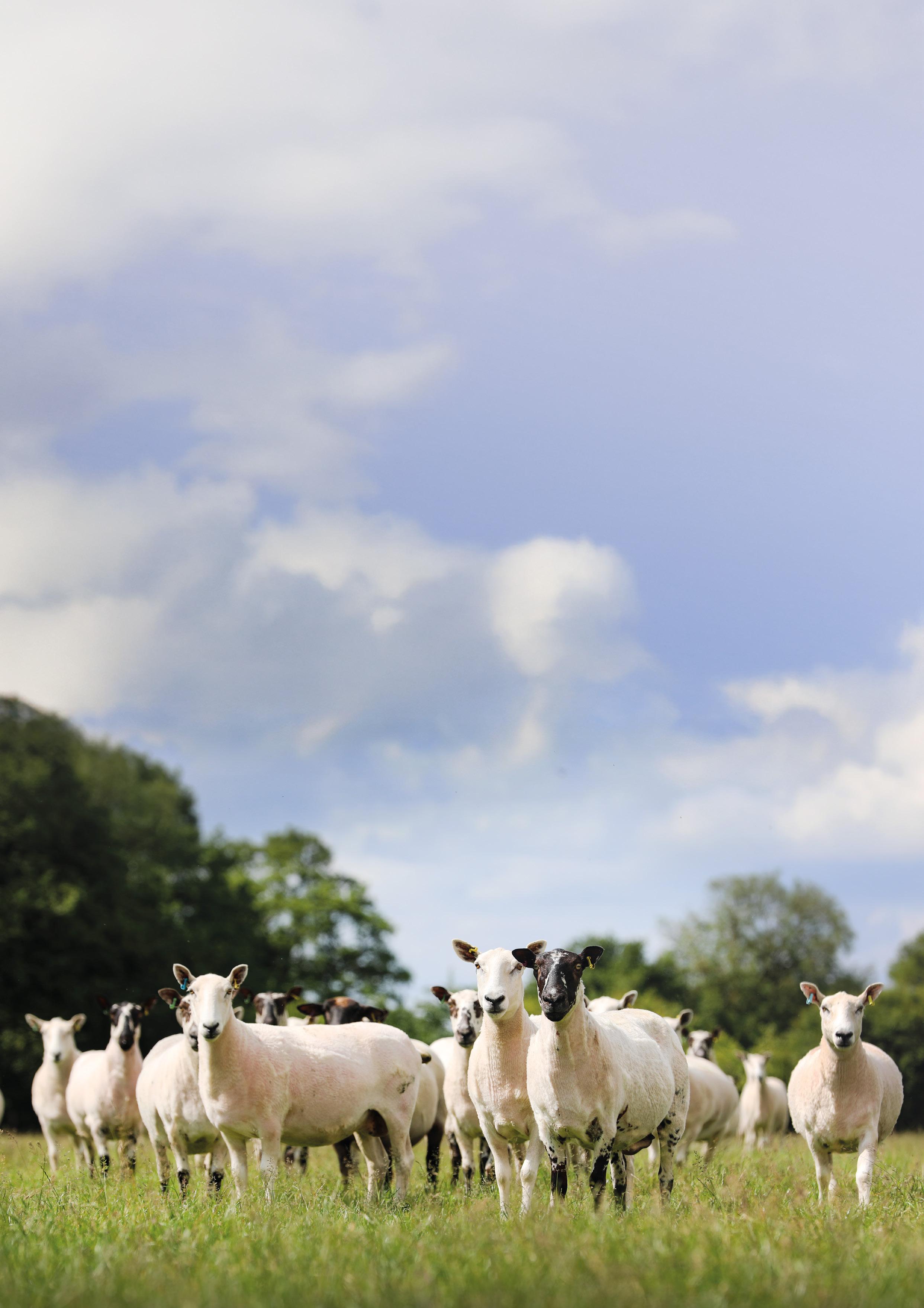
Texel tups combined with milky ewes enables the flock to achieve impressive growth rates, averaging 0.43kg/day.
The Cox family, Marston, Staffordshire
• 1050 acre mixed dairy, beef and sheep
• 500 ewes
• Aim for 200% lambs sold
• 0.43kg/day average growth rate
• 2024 average price £182.50/lamb

with buying the right ewes. We’re fortunate in being able to source all our replacements from one farm. This means we can buy them early in the season and get them home and ensure they receive abortion vaccinations ahead of tupping.”
Tom, who farms in partnership with his wife, Lucy, and mother and father, Vera and Steve, says being on dairy grass means the ewes always do well through the summer and autumn, with concentrate
feed introduced ahead of lambing and ewes housed dependant on weather conditions.
“In bad years we’ll house the ewes at the turn of the year just to give the ground a break and ensure we’ve got some good grass to turn them out to after lambing. The aim is to have ewes and lambs out to grass at about three to four days post-lambing, although those rearing triplets tend to stay in for about a week to ensure they’re well settled.
“We usually end up with about 25% of the ewes scanned for triplets rearing all three and endeavour to cross foster as many of the others as we can.”
Having sold to ABP on a deadweight basis for a number of years the family have been keen to maximise carcass weights without the risk of lambs grading too fat, so have invested in texelplus recorded rams with lower fat EBVs.
“ABP pay to 22kg and we’d like to get as many lambs as we can in the 21.5kg-22kg bracket without them being too fat, so going for rams with lower fat indexes made sense. The growth rate in their lambs has been exceptional, although it’s hard to say whether we’ve achieved the overall aim due to using several rams on each tupping group,” he says.
Last year the average daily liveweight gain on every lamb sold was 0.43kg a day, with lambs sold early in the season achieving an average gain of 0.52kg a day.
while creep feeding cost us £13.27 a lamb last year, I believe it has more than paid for itself.
“In 2024 we’d sold half the lambs by the end of May, freeing up ground for the dairy and beef enterprises and also meaning less labour was needed for the sheep.
“Our average lamb price was £182.50, with a range from £156 to £205. Most of the Texel cross lambs grade as Us, with the occasional E grade in there and a number of Rs too, but the key is to keep them in the optimum fat class as while we’re not penalised for going over 22kg, we are penalised once we hit a 3H or 4L grade.
“That said, we don’t get paid above 22kg, so we try and avoid having any overweight lambs if we can. We tend to draw at about 39kg early in the season when they’ll kill out really well and rarely let anything get to about 42kg liveweight before we send it,” he adds.
Keen to ensure the flock is performing as well as it can Tom records every lamb at birth, monitoring performance from birth to slaughter and enabling a better understanding of the challenges faced each year. “We work closely with our vets on the health side of things and analysing this data helps ensure we’re doing everything we can to maximise performance.
“We can find ewes which haven’t performed as well as we want and make culling decisions based on fact not feeling,” explains Tom.
“We draw lambs every week once we start and by the end of August we’ll have every lamb away ready to start the cycle again with tupping in September.
“I firmly believe the Texel rams are key to maximising performance and output in our system and they fit so well with the Welsh Mule ewes and the high input system we’re operating, which matches up with the dairy herd which averages 12,500 litres a cow,” he adds.
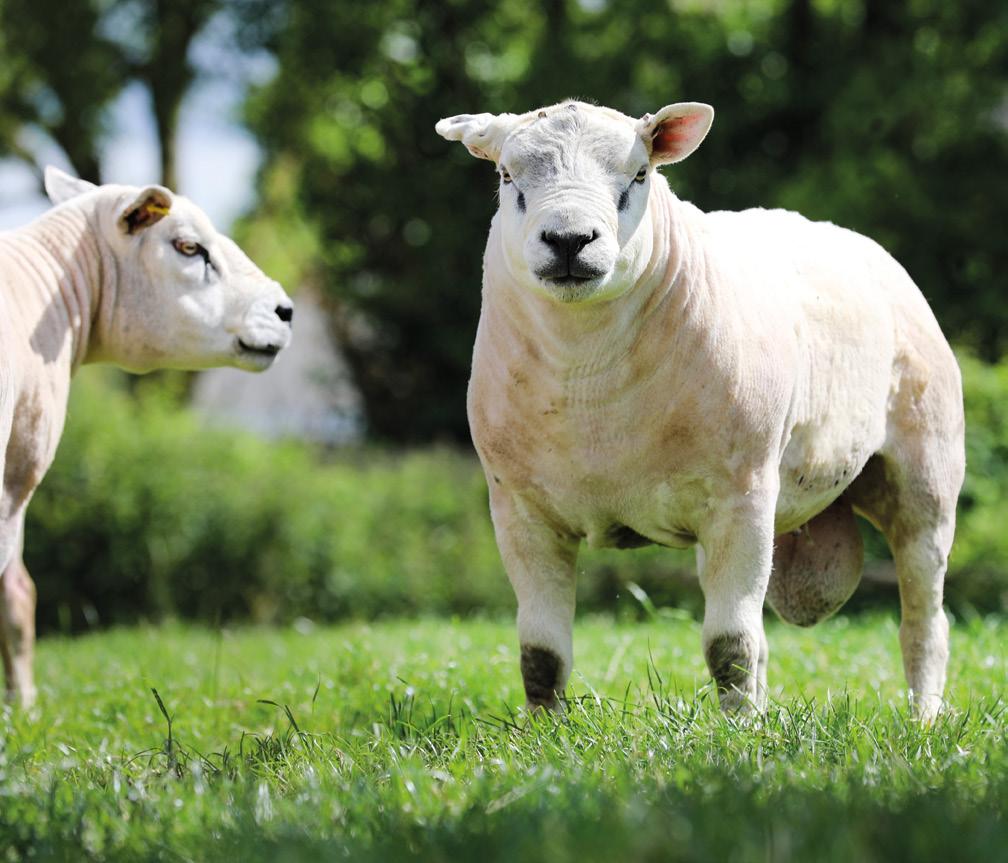
Texels are key to maintaining performance for the Cox family’s system.
We aim to sell two lambs for every ewe tupped, says Tom Cox.
“The combination of milky ewes, high growth rate rams and creep feeding is definitely delivering on that front and
The flock’s lambs are sold deadweight, with most grading as U grades.
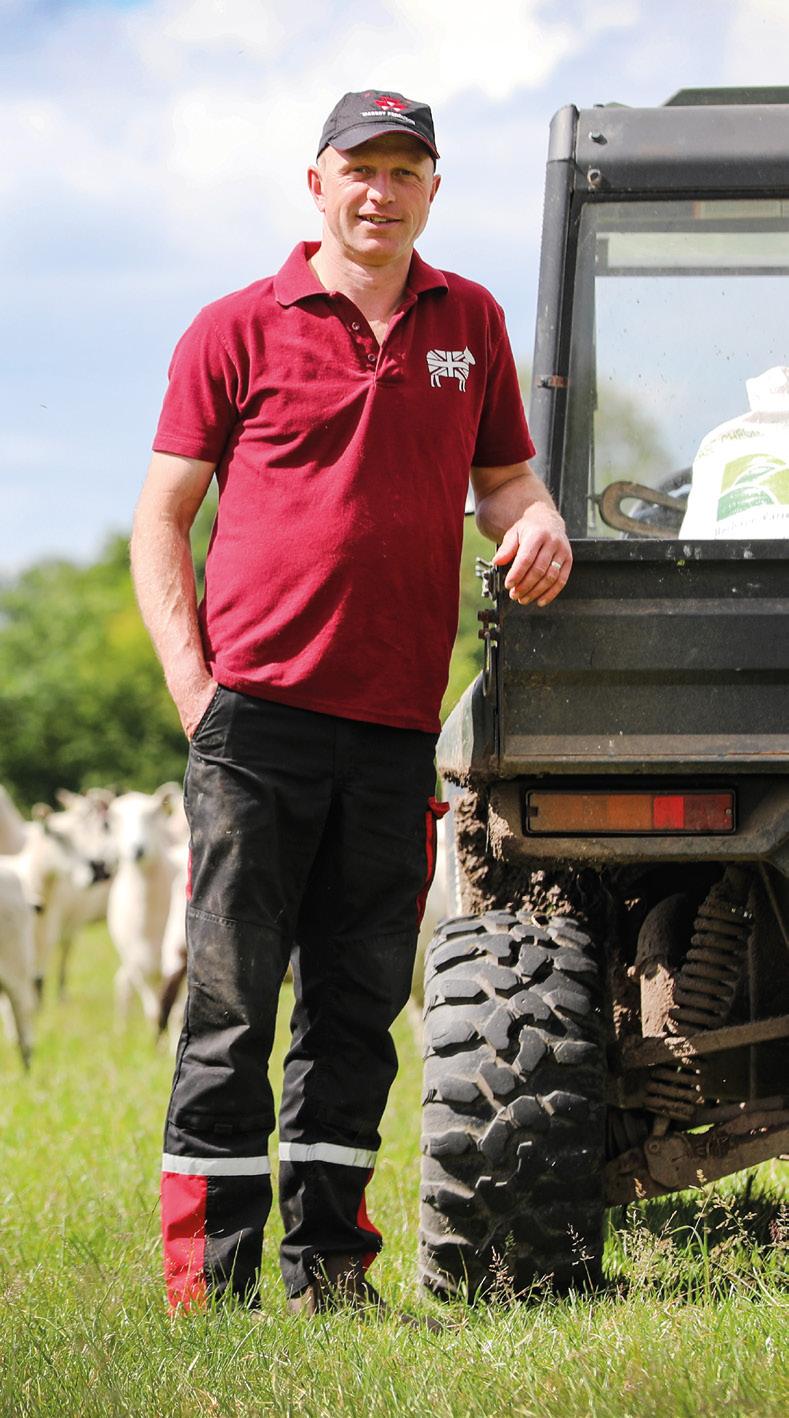
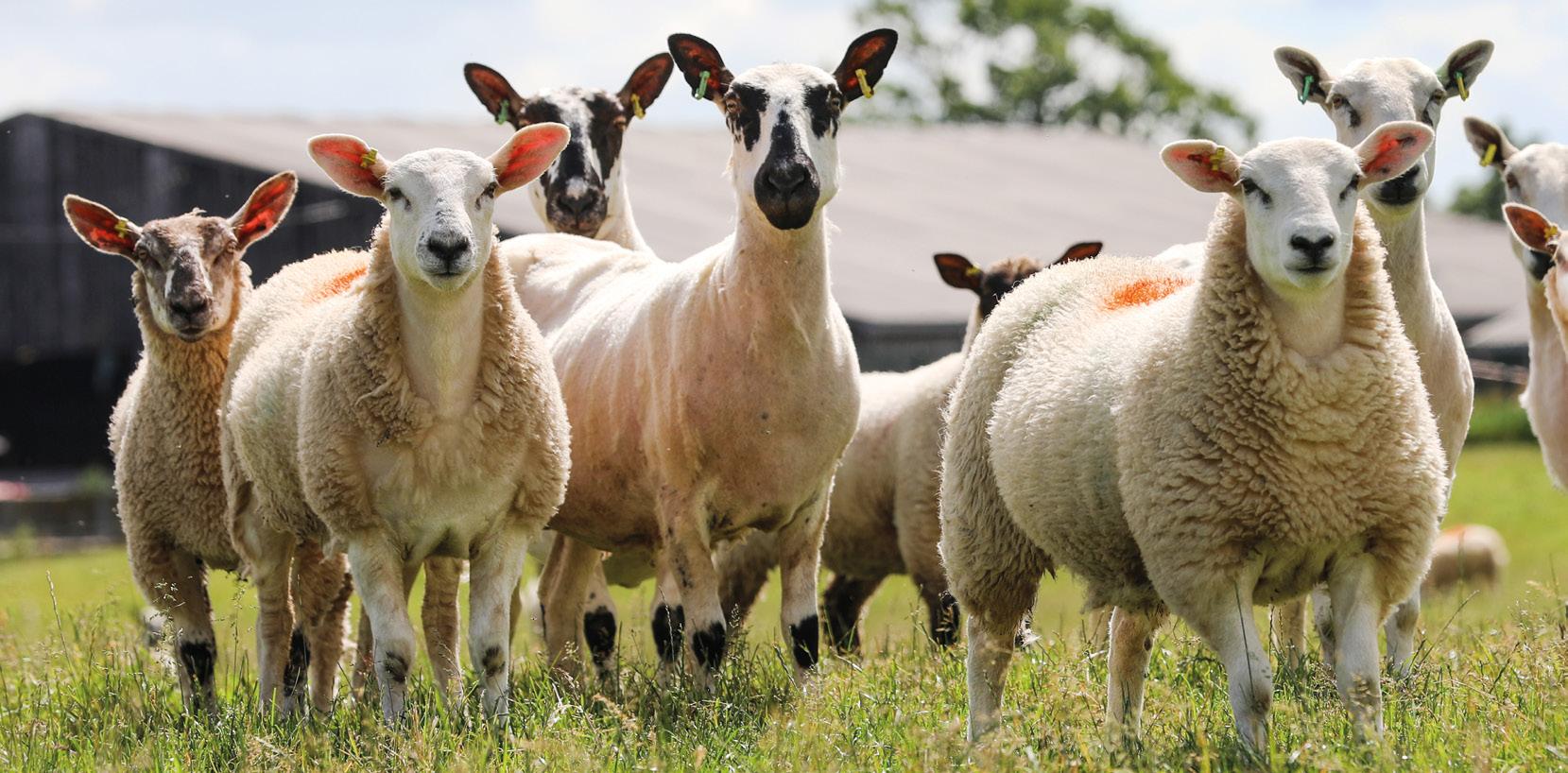
High index Texel rams add more than £690 to their slaughter progeny *
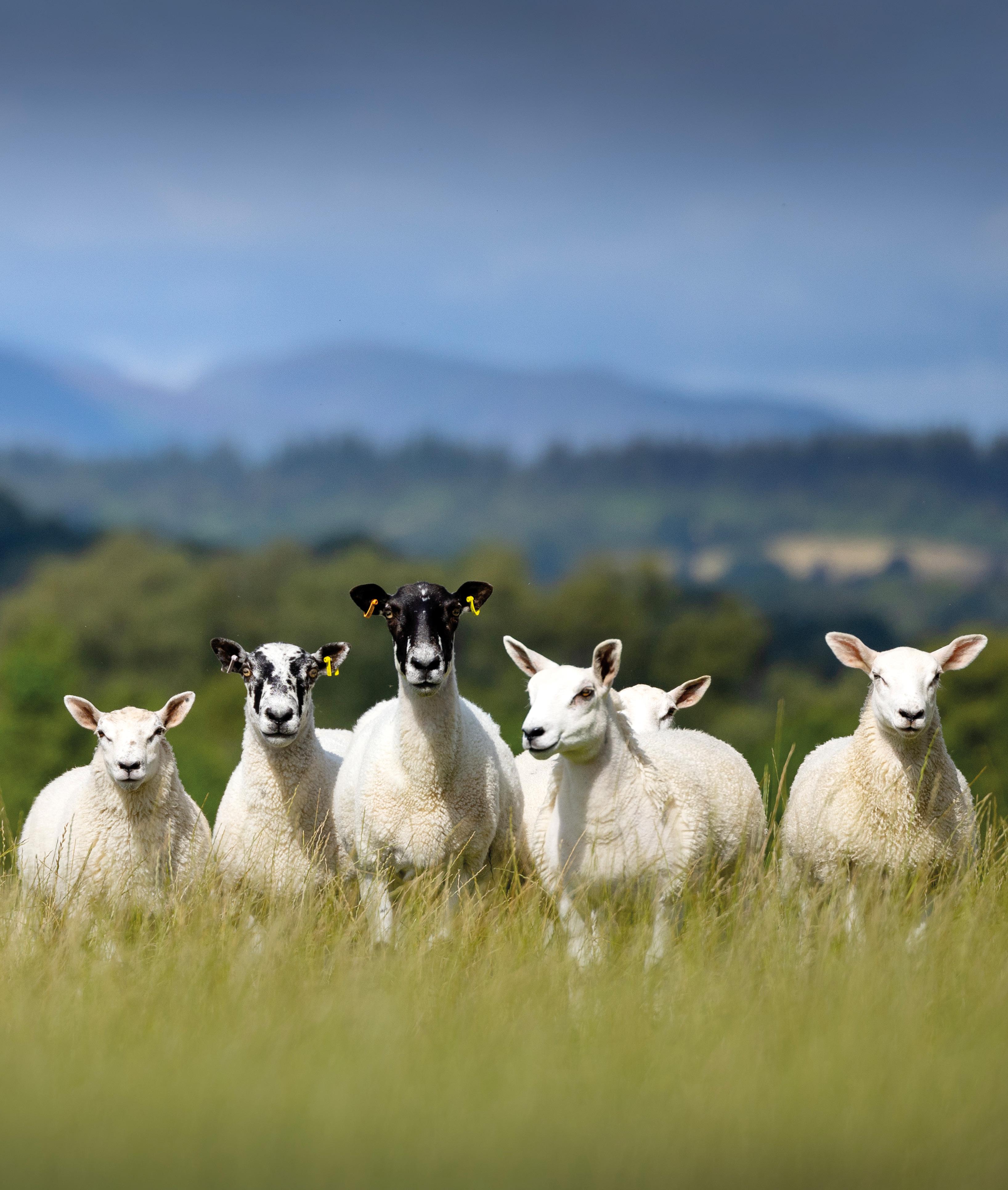
Texel-sired lambs achieve growth rates of more than 0.5kg/ day, getting to slaughter weight quicker. ***
Texel lambs regularly earn up to 32% premiums over live market averages. **
Texels are adding £23.5m more to the industry every year through genetic improvement. **** Texel sales take place at more than 20 markets across the UK. Scan here to find one near you